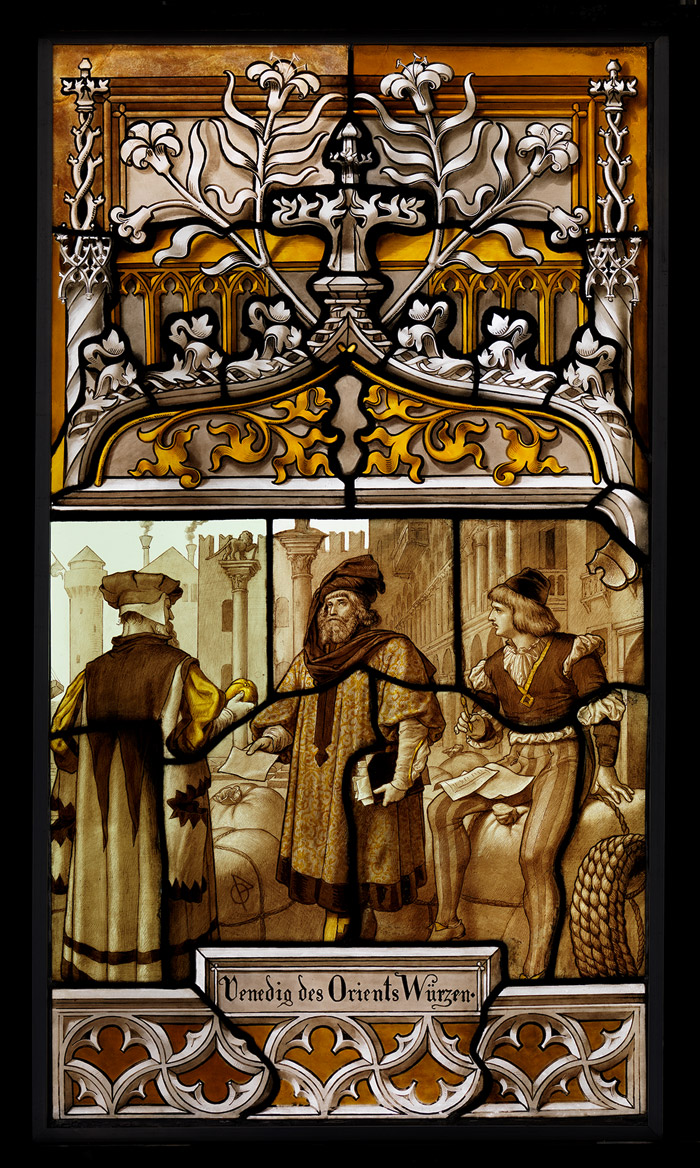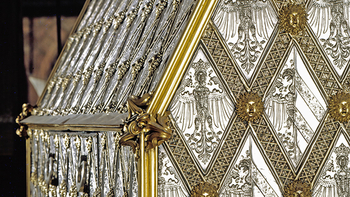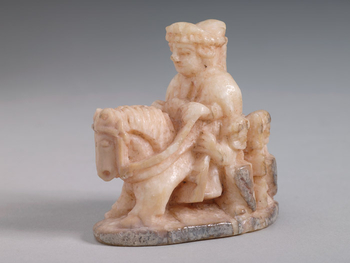Medieval images

Project duration: 2006 – 2012
The exhibition will be installed on the gound floor of the so-called “Galeriebau”, the former Lapidarium, providing the prelude to the permanent exhibition “Middle Ages”. In order to respect the architectural structure of the vaulted central hall, erected on four columns between 1916 and 1920, the exhibition installation concentrates on the columns. For climatic reasons, the exhibits are mostly shown in cases on shelves surrounding the columns.
The subjects “Emperor and Empire”, “The Church”, “The Knight” and “The City” are assigned to the four columns where they signify, like keywords, medieval society. In a special case in the centre of the room the shrine with the imperial treasure, housed in the Germanisches Nationalmuseum since 1861, is exhibited. As receptacle of the testimonials of Christian faith, which the emperor had transferred to the imperial city of Nuremberg, the reliquary shrine of 1438-1440 embodies as no other monument the connection between emperor, empire, Church and city at the end of the middle ages. The central positioning in the room makes these relationships immediately obvious.
The works exhibited here are all original documents of the time or reflect the time through the medium of art, communicating images of its history which is as fragmentary as its records. Origin and function of the objects cannot always be clearly determined.
Opposite this ambulatory along the western wall is a series of glass paintings created for the museum between 1875 and 1878. The nine windows formerly adorned the so-called “Saal der Reichsstädte” (“Hall of the Imperial Cities”) whose décor was used by the Nationalmuseum in the late 19th century to illustrate the concept and pictorial language of historicism in reference to the “Altes Reich” (Holy Roman Empire of German Nations) and thus to its own identity. Historicizing representations of important events from the history and cultural life of German cities in the middle ages are shown in fanciful recreations far exceeding our historical knowledge. The multifaceted and detailed depictions stand in marked contrast to the fragmentaty character of the actual tradition of medieval material culture.
The juxtaposition of 19th-century depictions of the middle ages with the image of the era conveyed by the museum today fulfills a double goal: in the vestibule to the permanent exhibition on medieval art and culture, this juxtaposition points out the changing attempts over centuries at approaching the past, especially the role played by the museum in these attempts. Situating museum objects within time specific historical and cultural concepts however is also intended to sensitize museum visitors to the presentations of the modern, historico-cultural museum that abstains from freely imagined constructions, focusing instead on the critically researched original in its historical context.
Responsible
Dr. Ralf Schürer
Dr. Jutta Zander-Seidel
Dr. Martin Baumeister
Dr. Daniel Hess
Dr. Frank M. Kammel
Anja Kregeloh M.A.
Dr. Matthias Nuding
Dr. Tobias Springer
Annika Dix, Dipl. Rest.
Lisa Eckstein, Dipl. Rest.
Simone Hänisch
Ada Hinkel
Ute Meyer-Buhr
Susanne Rohm, Dipl. Rest.
Roland Schewe M.A.
Elisabeth Taube, Dipl. Rest.
Jürgen Wolff, Dipl.-Ing. (FH)
Architekt, Staatliches Bauamt Erlangen-Nürnberg
Katrin Söncksen, lichttransfer, Berlin
Weitere Objekte des Projekts

Heiltumsschrein
Nürnberg, 1438-1440

Reitender Bischof als Schachfigur

Information and Services
Plan Your Visit
Opening Times
Location and Approach
GNM Museum Shop
FAQ
Library
Branches
Contact
